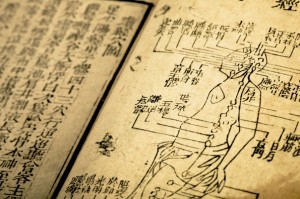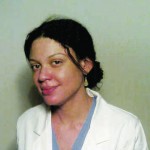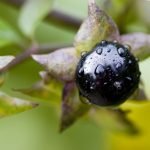Liver Acupuncture
Enhancing Xenobiotic Detox
Catherine Price, NMD, MSAc
The liver is the main site of metabolism of xenobiotics; therefore, it is targeted during most naturopathic detoxification protocols, which attempt to remove toxins from the body via stimulation of metabolizing and excreting pathways.1 The Liver is also one of the zang fu organs in Traditional Chinese Medicine (TCM). In this article, “Liver” will be capitalized when referring to its TCM function to differentiate it from the anatomical liver. Many manifestations of liver disease, as well as conditions that are benefited by naturopathic liver detoxification protocols, are attributed to disorders of the Liver meridian or zang fu organs. Therefore, Liver disharmonies are treated with TCM herbs that have been demonstrated to have liver-modulating effects. Examples are using green tea to cool Liver heat and stimulate phase I of liver xenobiotic metabolism1 or dong quai to smooth Liver qi stagnation and modulate expression of liver proteins.2 Therefore, it would follow that, when practicing integrative medicine, the Liver meridian and zang fu organ would be one of the targets of acupuncture when using it as part of a detoxification protocol that uses the anatomical liver. Unfortunately, there is little published peer-reviewed literature about the use of acupuncture in liver detoxification programs that target phase I, II, or III of liver xenobiotic metabolism. Therefore, different aspects of liver detoxification are explored herein, and protocols are proposed relative to anticipated effects of certain acupuncture points based on related research.
According to zang fu theory in TCM, the Liver maintains the flow of qi, or vital energy. If this flow is slowed, Liver qi stagnation occurs. With time, heat can develop, and this can manifest as Liver yang (male, hot, active, rising energy) rising, Liver fire blazing, or damp heat in the Liver and Gallbladder Detoxification channels. Liver qi stagnation is associated with depression, brewing anger, the sensation of a throat lump, sighing, hypochondriacal pain, breast tenderness, and menstrual irregularities (due to the Liver’s blood-regulating functions). Western medicine correlates are dysmenorrhea, irritable bowel syndrome, fibrocystic breast disease, and premenstrual dysphoric disorder. Liver yang rising can manifest as anger, red eyes, irritability, headaches, hypertension, and sudden onset of deafness, dizziness, and tinnitus. Associated diseases are Meniere disease, tension headaches, migraines, and anxiety. If the yin (female, cold, stagnant, sinking energy) no longer anchors the yang or if the yang has become so bottled up by Liver qi stagnation that it begins to rise up, Liver wind can manifest with or without concomitant Liver yang rising. This will encompass all the tremor-related diseases, such as Parkinson’s disease, seizures, epilepsy, delirium tremens, Huntington’s disease, tics, and Gilles de la Tourette syndrome. It also incorporates the brain blood flow impairment of strokes and transient ischemic attacks. Liver fire blazing is similar to Liver yang rising. The latter is more of an amplification of the heat component of Liver qi rising, while the former has more of a wind component due to the unanchored movement aspect of yang. Liver fire blazing corresponds to the manic phase of bipolar disorder, positive symptoms of schizophrenia, active herpes zoster and herpes simplex, hematemesis, insomnia due to racing thoughts, cluster headaches, subarachnoid hemorrhage, hemicrania continua, trigeminal neuralgia, hypertensive emergencies, and attention-deficit/hyperactivity disorder. When the Liver qi does not flow, it can become like a warm swampy marsh and manifest as damp heat in the Liver and Gallbladder channels. This is analogous to sexually transmitted illnesses, pelvic inflammatory disease, nausea, vomiting, jaundice, cholelithiasis, and candidiasis (especially in the genital region or abdominal skin folds).3
All the aforementioned TCM syndromes can be associated with hepatitis and other liver diseases. For example, chronic hepatitis would fit the picture of Liver qi stagnation. Nonalcoholic fatty liver disease or nonalcoholic steatohepatitis (NASH) would be caused by damp heat in the Liver and Gallbladder channels. Acute hepatitis would be more likely to be due to Liver yang rising or Liver fire blazing. Hepatitis, and accompanying fatty changes or cirrhosis, can impede the function of some of the cytochrome P450 and other oxidation pathways in phase I and some of the conjugating enzymes in phase II.4,5 Therefore, it follows that one way to approach a suggestion for an acupuncture protocol to enhance a naturopathic liver-oriented detoxification would be to use the treatment of TCM Liver syndromes.
Another way is to use acupuncture points that modulate liver function on a gene level via increased activity of phases I, II, and III liver enzymes and decreased inflammation, cellular pathologic conditions, reactive oxygen species, and reactive nitrogen species. As Xu et al state:
[E]xposure to phase I, phase II and phase III gene inducers may trigger cellular “stress” response leading to the increase in their gene expression, which ultimately enhance the elimination and clearance of these xenobiotics and/or other “cellular stresses” including harmful reactive intermediates such as reactive oxygen species (ROS), so that the body will remove the “stress” expeditiously. Consequently, this homeostatic response of the body plays a central role in the protection of the body against “environmental” insults such as those elicited by exposure to xenobiotics.1(p249)
This position is complicated by findings that pathogenesis occurs because of reactive oxygen species, as well as overexpression of enzymes that downregulate hydrogen peroxide production. There is a happy middle ground when it comes to reactive oxygen species and reactive nitrogen species, which may explain why both too much and too little reactive oxygen species cause disease. To explain this phenomenon, Marí et al6 cite the following 2 studies: (1) a study demonstrating that mice with too little hydrogen peroxide develop insulin resistance and obesity and (2) the Selenium and Vitamin E Cancer Prevention Trial, which showed that the use of antioxidants caused mixed results in cancer prevention and increased diabetes mellitus. The theory is that some free radical and hydrogen peroxide stress is required for insulin signaling. While too many free radicals decrease the longevity of cells by accumulating damaged macromolecules in a cell, if the concentrations of reactive oxygen species and reactive nitrogen species do not cross a certain minimum threshold, this can cause the organism to cease its ability to signal and perform vital functions.
We cannot think of liver detoxification as simply increasing antioxidants and anticipating that they will correct some imbalance with oxidants to preserve liver detoxification function. Detoxification is more complicated than that, and this is where acupuncture may have a vital role. Acupuncture has been shown to decrease reactive oxygen species7,8 and may work in a manner that is more complex than the simple addition of antioxidants to one’s diet. While vitamin C quenches free radicals in a nonselective manner, acupuncture might exert its role by decreasing reactive species enough to prevent pathologic conditions from excess, while keeping levels of reactive species high enough that the signaling pathways are preserved. Of course, research must be performed before mechanisms are known, but this is an interesting approach that deserves investigation.
Use of Acupuncture Points on the Liver Meridian to Treat the Anatomical Liver
 One argument for using points on the Liver meridian to treat the liver is found in a feline study9 of afferent innervation of LR3, LR14, and the anatomical liver via injection of a tracer into acupuncture points. T12, L1-5, and S1-3 were found to represent the LR3 spinal segment distribution. T5-8 was the LR14 distribution. The liver distribution was T3-12 and L1. All areas studied overlapped in the spine, which suggested that the Liver meridian was connected to the liver organ and that points on the Liver meridian could access the liver. Notably, LR3 is one of the most powerful points on the body, and it covered the most innervation.
One argument for using points on the Liver meridian to treat the liver is found in a feline study9 of afferent innervation of LR3, LR14, and the anatomical liver via injection of a tracer into acupuncture points. T12, L1-5, and S1-3 were found to represent the LR3 spinal segment distribution. T5-8 was the LR14 distribution. The liver distribution was T3-12 and L1. All areas studied overlapped in the spine, which suggested that the Liver meridian was connected to the liver organ and that points on the Liver meridian could access the liver. Notably, LR3 is one of the most powerful points on the body, and it covered the most innervation.
Some practitioners differentially diagnose ailments via the pinch-pressure pain test, in which the patient grades the severity of pain after the practitioner’s pinch at different acupuncture points. The test administered at LR8, LI4, LI11, and SI11 was found to be useful for differentiating chronic hepatitis from conditions that mimic it, such as pregnancy and adverse effects of corticosteroid use.10 Chronic hepatitis was found to be associated with higher pain severity after the pinch-pressure pain test at the right LR8 and SI11 and the left LI4 and LI11 loci. Patients with pregnancy or corticosteroid adverse events showed the opposite pattern. LR8 is the water point of the Liver meridian, and water tonifies wood; so perhaps when Liver is in excess because of hepatitis, this area could be sore. SI11 is primarily known for its effect on shoulder and other upper extremity pain. LI11 is a he-sea and Large Intestine tonification point that treats neck, shoulder, and elbow pain. SI11 and LI11 cover some of the area that corresponds to the referral pattern of liver and gallbladder pain. LI4 is well known for soothing headaches from Liver qi stagnation or Liver yang rising. There seems to be a stretch in relating some of these points to hepatitis, but as with much of TCM, although point selection may not conform to TCM theory, it may still be clinically valid.
Modulation of Oxidative Stress With Acupuncture
Yu et al found that GB34, LR3, ST36, and SP10 regulated “oxidative stress in the nigrostriatal system in the 6-hydroxydopamine (6-OHDA) lesioned rat.”8(p58) Levels of superoxide dismutase, glutathione peroxidase, catalase (ie, reduced glutathione), and malondialdehyde were measured to determine oxidative stress levels. In rats with simulated Parkinson’s disease, electroacupuncture (EA) 100-Hz stimulation of ST36 and SP6 was found by Wang et al11 to be an antioxidant that protected the nigrostriatal system from pathologic conditions. Electroacupuncture at 100 Hz, but not 0 Hz, was found to “reduce H2o2 content and elevate glutathione level and total SOD [superoxide dismutase] activity.”11 Also found to be anti-inflammatory was the ratio of Bcl-2 to Bax, which is anti-inflammatory. The study addresses the question of EA vs no stimulation, although it does not consider manual stimulation. Similar results were observed by Kim et al12 using EA of GB34 and GB39 in a rat model of Parkinson’s disease. It is unknown if these findings are applicable to liver detoxification, but as they pertain to Parkinson’s disease, they would be a good starting place for Liver wind protocols.
Rat models of Alzheimer’s disease were used by Zhang et al13 to show that EA of GV20, CV14, KI3, BL23, and ST36 increased superoxide dismutase activity in the hippocampus. A study14 of myocardial ischemia-reperfusion injury in rats found that nitric oxide and nitric oxide synthase were increased and that intracellular Ca2+ was decreased by EA of PC6. Electroacupuncture of the sham point, LU7 and LI4, did not have the same result. In this situation, these 2 free radicals are desired because they mitigate myocardial ischemia-reperfusion injury. Results of the study suggest that acupuncture points are specific and targeted to organs on their meridian, as PC6 addresses the Pericardium and Heart in both the Western and TCM sense even though it is remote from the heart. The findings also underscore that quenching of free radicals is not always the desired result of a treatment. Reducing, but not tonifying, needling of LR3 was found to decrease blood pressure and levels of calcitonin gene–related peptide and nitrogen monoxidum in the blood plasma and hypothalamus of rats stressed by hypertension.15 The reducing technique was twirling the needle clockwise, and the tonifying technique was twirling the needle counterclockwise. Findings in this study suggest that reducing LR3 can resolve Liver yang rising and have antioxidant abilities. Because the blood plasma was measured and the point was on the Liver meridian, this study may be applicable to liver detoxification protocols.
Acupuncture in the Treatment of Liver Disease
After CCl4-induced chronic liver damage in rats, GB34 was found to reduce the liver index and levels of serum alanine aminotransferase, aspartate aminotransferase, alkaline phosphatase, and total cholesterol, while restoring total white blood cells and lymphocytes.16 Manual reinforcing acupuncture was used for point stimulation. GB34 is on the Gallbladder meridian, which is the yang organ to the Liver’s yin aspects. GB34 has been traditionally used to clear damp heat from the gallbladder and liver meridians, and chronic hepatitis or NASH could fit this picture. Another study17 found that CCl4-induced acute liver damage was reduced if treated by acupuncture of ST36 and LI4 after liver damage was induced in rats. Needling before liver damage did not prevent it. In a recent study by Liu et al,18 rat livers injured by Escherichia coli lipopolysaccharide had decreased liver injury if the rats underwent EA at PC6. The authors predicted that sparing of hepatocytes would occur because of decreased hypotension, reduced tachycardia, or increased production of plasma nitric oxide. None of these effects were observed, so the mechanism by which PC6 worked is unknown.
Inflammation of the liver ultimately leads to cirrhosis if allowed to progress to its end stage. Cirrhosis downregulates some, but not all, phase I enzymes and has a varied effect on phase II detoxification.5 Therefore, acupuncture that reduces liver inflammation can help to preserve the detoxifying abilities of the liver. Electroacupuncture of ST36 could be recommended for this purpose because it quells inflammation by inhibiting β-hexosaminidase release and interleukin 6 (IL-6) secretion and by reducing nuclear factor–κB DNA-binding activity.19 Electroacupuncture of ST40 was found to decrease expression of genes associated with liver inflammation and hypercholesterolemia.20
Electroacupuncture of ST36 and DU26 modulated the effect of shock on the liver in several studies. This shows that these points can target the liver and prevent some of the same processes that can cause nonshock liver disease. An early study21 showed that the hepatic pathologic condition caused by lipopolysaccharide-induced shock can be attenuated by EA of ST36 and DU26. Sorbitol dehydrogenase, magnesium adenosine triphosphatase, glucose-6-phosphatase and 5’-nucleotidase are enzymes used to measure hepatic damage. The activity of all was slightly increased in the EA group, except for 5’-nucleotidase, which was obviously increased. Another study22 of rat liver after lipopolysaccharide-induced shock showed that the increased postshock levels of liver tumor necrosis factor and plasma alanine aminotransferase activity can be decreased by EA at ST36. In a study 23 with manual acupuncture stimulation, ST36 pretreatment or posttreatment had no effect on liver injury, hepatic nitric oxide concentration, or hepatic inducible nitric oxide synthase expression.The same study found a positive effect on all 3 variables in kidney cells. All 3 studies looked at different parameters, so it follows that ST36 may attenuate liver damage in some pathways, but not others. In a different type of shock study,24 rabbits were bled until they entered hemorrhagic shock. Acupuncture of DU26 restored the activity of hepatocyte lactate dehydrogenase and succinate dehydrogenase in histochemically stained postmortem liver biopsy specimens. ST36 is a he-sea point known for tonification of qi, but it has no direct connection to the Liver. DU26 is the meeting point of the Du and the Ren meridians, which symbolizes the junction of yang and yin or heaven and earth. It is best known for the treatment of seizures and the restoration of consciousness, but not for any connection with the Liver.21
Electroacupuncture at ST40 lowered cholesterol levels in the same manner as simvastatin. Research performed by Li and Zhang showed that it “not only regulated the expression of genes which were directly involved in the cholesterol metabolism in the liver, but also significantly affected the expression of genes involved in signal transduction, transcription regulation, cell cycle, cell adhesion, immunity and stress.”25(p617) Another study20 found that EA of ST40 targeted the expression of genes associated with lipid metabolism and the immune reaction in murine liver. Although ST40 is not on the Liver meridian, it resolves phlegm and can thus be combined with GB34 to treat damp heat in the Liver and Gallbladder or used alone to treat symptoms of Liver qi stagnation (such as sensation of a throat lump). It is the luo-connecting point of the stomach channel, but this means that it connects the Stomach meridian to the Spleen meridian and is not a direct connection to the Liver channel.
NASH interferes with phase I and phase II of liver detoxification, so acupuncture protocols that address this are necessary to practice in a country where obesity predisposes the population to fatty liver changes.4 In that study, fatty liver disease was effectively treated with EA of CV12, ST25, LR14, GB26, and GB34. In another study,26 thirty patients with both obesity and fatty livers were administered EA for 3 months. Liver fat, body weight, body mass index, fat percentage, visceral fatty content in the abdominal region, subcutaneous fat, and waist to hip ratio were significantly decreased. In a larger but uncontrolled study27 of 98 participants, NASH was treated with acupuncture of BL23, KI3, CV4, and SP6 vs phosphatidylcholine. Those who received phosphatidylcholine comprised the “medicine” group (although phosphatidylcholine is not a proven treatment for NASH28). Results showed that aspartate aminotransferase, alanine aminotransferase, and galactosylhydroxylysyl glucosyltransferase levels were decreased in both study27 groups. Triglycerides and total cholesterol levels were significantly decreased in the acupuncture group. In a follow-up study,27 liver injury was improved in both groups, as gauged by computed tomographic scan, but there was more improvement in the acupuncture group. In another study,29 EA of ST36 and ST40 was found to lower serum triglycerides and total cholesterol levels in rats with nonalcoholic fatty liver disease.
In a well-designed study,30 acupuncture performed as well as an acupuncture-herb combination in reducing clinical symptoms of liver cirrhosis. Both did better than treatment with glucuronolactone (a drug often used for detoxification purposes) or glucuronolactone-lamivudine (a nucleoside analogue reverse transcriptase inhibitor). Acupuncture points used were BL18 (Liver back-shu point near the T9 spinal ganglion that corresponds to part of the liver innervation), LI14 (front-mu point of the Liver), KI3, and SP6. The rate of negative conversion of hepatitis B virus was the same among all groups.
In a 2-week study31 of 60 hospitalized patients with mild or moderate hepatitis B virus, the half who received daily 30-minute EA tailored to their specific TCM pattern had greater improvement than the half who received allopathic hepatitis B virus treatment. The authors found that “the duration of the treatment for recovery of the hepatic functions was significantly shorter, and the IL-8 level significantly lower” in patients who received EA.31(p108) This is an excellent study to bolster the use of acupuncture to treat patients with hepatitis B virus because it not only involves humans but also is performed in a controlled environment and the treatment control is allopathic medicine. Unfortunately, it does not contribute much to the formulation of a point combination to facilitate liver detoxification because each patient received individualized care.
This brings us to one of the cornerstones of naturopathic care: treat the person, not the disease. That said, this review has provided some insight into the formulation of points for acupuncture supplementation of liver detoxification, so that practitioners can choose a combination. The following points seem to be useful for targeting the liver and soothing inflammation: LR3, LR8, LR14, GB26, GB34, ST25, ST36, ST40, LI4, PC6, BL18, CV12, and the Gan auricular point. Use these with points tailored to the patient’s individual needs to augment other naturopathic modalities of liver detoxification.
 Catherine Price, NMD, MSAc is currently finishing her clinical medicine rotations for the MD degree at Saba University School of Medicine (Devens, Massachusetts). She previously had a naturopathic general practice at Woodstock Wellness Center and Zen Space Healing Center in Portland, Oregon, where she focused on pain management and accident rehabilitation. She concurrently consulted for GlaxoSmithKline and worked with consumers who took the weight loss drug alli. Her naturopathic and acupuncture education was at Southwest College of Naturopathic Medicine (Tempe, Arizona) and Phoenix Institute of Herbal Medicine and Acupuncture. Before living in Phoenix, Arizona, she performed research at the University of California, Berkeley, and in San Francisco at the Lawrence Berkeley National Laboratory, which included studying what the effect of electromagnetic fields is on breast cancer treatments and how breast cancer drugs and natural compounds interact with human cells and estrogen receptors α and β.
Catherine Price, NMD, MSAc is currently finishing her clinical medicine rotations for the MD degree at Saba University School of Medicine (Devens, Massachusetts). She previously had a naturopathic general practice at Woodstock Wellness Center and Zen Space Healing Center in Portland, Oregon, where she focused on pain management and accident rehabilitation. She concurrently consulted for GlaxoSmithKline and worked with consumers who took the weight loss drug alli. Her naturopathic and acupuncture education was at Southwest College of Naturopathic Medicine (Tempe, Arizona) and Phoenix Institute of Herbal Medicine and Acupuncture. Before living in Phoenix, Arizona, she performed research at the University of California, Berkeley, and in San Francisco at the Lawrence Berkeley National Laboratory, which included studying what the effect of electromagnetic fields is on breast cancer treatments and how breast cancer drugs and natural compounds interact with human cells and estrogen receptors α and β.
References
Xu C, Li CY, Kong AN. Induction of phase I, II and III drug metabolism/transport by xenobiotics. Arch Pharm Res. 2005;28(3):249-268.
Ding H, Shi GG, Yu X, Yu JP, Huang JA. Modulation of GdCl3 and Angelica Sinensis polysaccharides on differentially expressed genes in liver of hepatic immunological injury mice by cDNA microarray. World J Gastroenterol. 2003;9(5):1072-1076.
Chen TS, Chen PS. The liver in traditional Chinese medicine. J Gastroenterol Hepatol. 1998;13(4):437-442.
Buechler C, Weiss TS. Does hepatic steatosis affect drug metabolizing enzymes in the liver? Curr Drug Metab. 2011;12(1):24-34.
Elbekai RH, Korashy HM, El-Kadi AO. The effect of liver cirrhosis on the regulation and expression of drug metabolizing enzymes. Curr Drug Metab. 2004;5(2):157-167.
Marí M, Colell A, Morales A, von Montfort C, Garcia-Ruiz C, Fernández-Checa JC. Redox control of liver function in health and disease. Antioxid Redox Signal. 2010;12(11):1295-1331.
Suh SJ, Kim KS, Kim MJ, et al. Effects of bee venom on protease activities and free radical damages in synovial fluid from type II collagen–induced rheumatoid arthritis rats. Toxicol In Vitro. 2006;20(8):1465-1471.
Yu YP, Ju WP, Li ZG, Wang DZ, Wang YC, Xie AM. Acupuncture inhibits oxidative stress and rotational behavior in 6-hydroxydopamine lesioned rat. Brain Res. 2010;1336:58-65.
Tao Z, Li R. The segmental distribution of afferent neurons of liver, and “qi men” point, “tai chong” point in the spinal ganglion [in Chinese]. Zhen Ci Yan Jiu. 1993;18(3):228-231.
Arichi S, Arichi H, Toda S, Ihara N. Clinical observations on several meridian loci in chronic hepatitis and liver cirrhosis in comparison with those in female neurovegetative disorder, pregnancy, and the steroid side-effects syndrome. Am J Chin Med. 1979;7(2):157-170.
Wang H, Pan Y, Xue B, et al. The antioxidative effect of electro-acupuncture in a mouse model of Parkinson’s disease. PLoS One. 2011;6(5):e19790. http://www.ncbi.nlm.nih.gov/pmc/articles/PMC3100295/?tool=pubmed. Accessed October 20, 2011.
Kim ST, Moon W, Chae Y, Kim YJ, Lee H, Park HJ. The effect of electroacupuncture for 1-methyl-4-phenyl-1,2,3,6-tetrahydropyridine–induced proteomic changes in the mouse striatum. J Physiol Sci. 2010;60(1):27-34.
Zhang P, Guan SS, Jiang GH. Effects of electroacupuncture on expression of Aβ positive cells of the hippocampus and SOD activity in rats with streptozocin–Alzheimer’s disease [in Chinese]. Zhongguo Zhen Jiu. 2010;30(12):1007-1010.
Wang C, Tian YF, Zhou D, et al. Influence of electroacupuncture on myocardial NO and NOS and intracellular Ca2+ contents in myocardial ischemia-reperfusion injury rats [in Chinese]. Zhen Ci Yan Jiu. 2010;35(2):113-117.
Wang L, Jing MX, Zhi JM, Lu J, Wang CY, Liu QG. Effects of reinforcing and reducing methods by twirling and rotating the needle on contents of CGRP and NO in rats with stress-induced hypertension [in Chinese]. Zhongguo Zhen Jiu. 2011;31(4):337-341.









